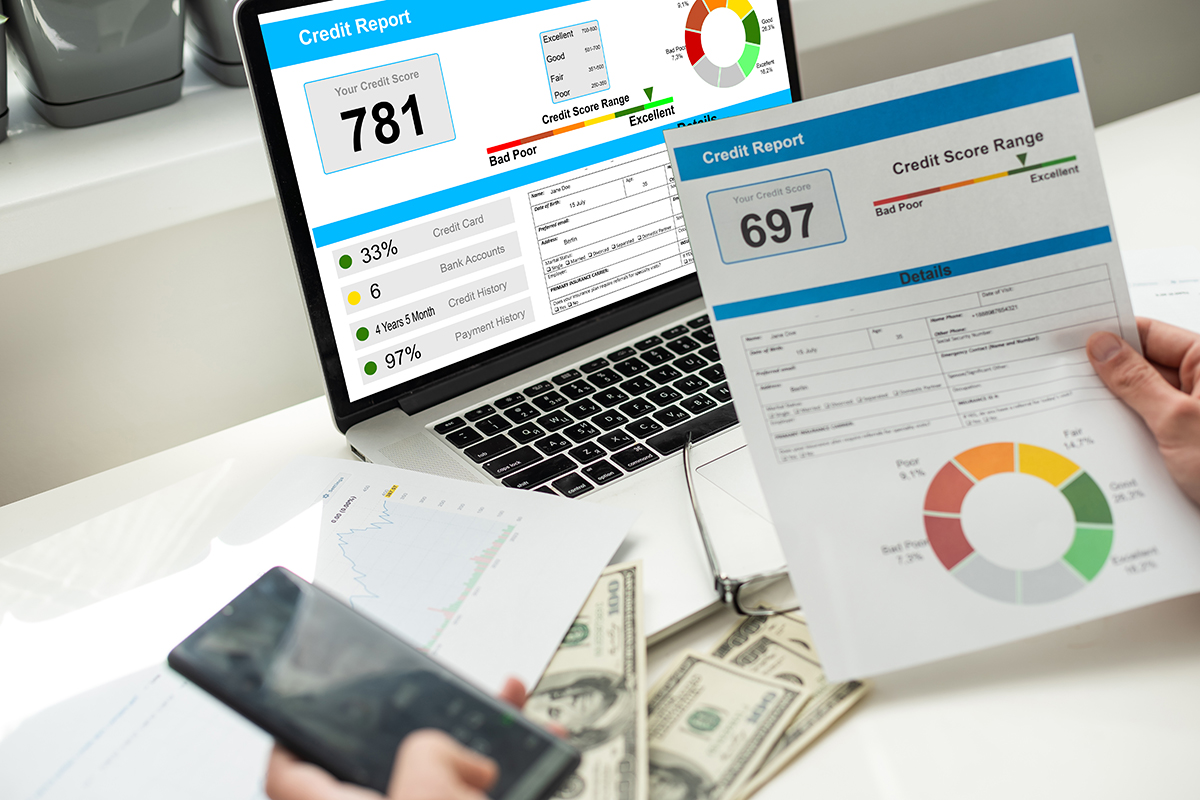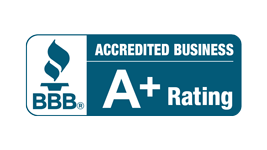What Are The Myths Surrounding Debt?
Debt is dangerous. Never borrow money. Paying interest is throwing money away.
Sound familiar? These are just a few of the debt myths that circulate like gospel, repeated so often that many people accept them without question. But here’s the truth: not everything you’ve heard about debt is accurate.
In a world where financial literacy is more important than ever, misunderstanding debt can cost you, emotionally, mentally, and financially. Whether you’re managing student loans, trying to pay off credit cards, or simply thinking about taking out a mortgage, knowing the difference between myth and reality is essential.
In 2024, the average American debt (excluding mortgages) was $22,713. This includes various types of debt, with credit card debt being a significant portion. [1]
Here are some of the most common misconceptions about debt. As they are revealed as myths, it will help you make informed decisions about your financial future.
1. Debt is always harmful and should be avoided completely
2. Paying off the largest debt first is the smartest way to become debt-free
3. Looking at your own credit score will damage it
4. Filing for bankruptcy will destroy your financial future permanently
5. It’s impossible to negotiate or change your repayment terms with creditors
6. As long as you make the minimum monthly payment, you’re managing your debt well
7. Working with a debt settlement company is the best and safest way to get rid of debt
Myth #1: All Debt Is Bad
The myth: Debt is inherently negative and should be avoided at all costs.
The truth: Not all debt is created equal, and some types can actually work in your favor.
It’s easy to think of debt as a financial burden, and in many cases, it can be. But when used responsibly, debt can be a strategic tool for building wealth, growing a business, or investing in your future. This is known as “good debt.”
For example:
- A mortgage can help you build equity in a home, often a solid long-term investment.
- Student loans can lead to higher earning potential over a lifetime.
- Business loans can fund expansion, create jobs, and increase income potential.
On the other hand, “bad debt” usually refers to high-interest consumer debt, like credit cards used for non-essential spending. But even that debt, when managed strategically, doesn’t have to define your financial health.
The key takeaway? Debt is a tool. Like any tool, it can help or harm depending on how you use it.

Myth #2: You Should Pay Off the Highest Balance First
The myth: The smartest way to get out of debt is to tackle the loan or credit card with the biggest balance first.
The truth: Paying off the highest balance isn’t always the most efficient or the most motivating method.
There are two proven debt repayment strategies:
- The Avalanche Method:
Focus on paying off debts with the highest interest rates first, while making minimum payments on the rest. [2]- Best for: Saving the most money over time.
- Why it works: High-interest debt grows faster, so eliminating it first reduces total interest paid.
- The Snowball Method:
Focus on paying off the smallest balance first, then move to the next smallest. [3]- Best for: Building momentum and staying motivated.
- Why it works: You get quick wins, which can encourage you to stick to your plan.
While the avalanche method is more cost-effective, the snowball method often works better psychologically. The right choice depends on your personality, discipline, and financial goals.
Bottom line: It’s not just about numbers, it’s about what keeps you going. Choose the strategy that helps you stay consistent.
Myth #3: Checking Your Credit Score Hurts It
The myth: Every time you check your credit score, your credit takes a hit.
The truth: Simply checking your own credit score has no impact on your credit at all.
This common misconception causes many people to avoid monitoring their credit altogether, which can actually lead to more problems in the long run. In reality, there are two types of credit inquiries:
- Soft Inquiries: These occur when you check your own credit report or when a company pre-approves you for an offer (like a credit card or loan). Soft pulls are completely harmless to your score.
- Hard Inquiries: These happen when a lender checks your credit as part of a lending decision (like applying for a mortgage, car loan, or credit card). A hard inquiry can slightly lower your score, but only temporarily, and usually by just a few points.
Monitoring your credit regularly is actually a smart habit. It helps you:
- Catch errors or fraudulent activity early
- Track your progress
- Make informed decisions when applying for credit
Tip: Use trusted platforms that offer free credit monitoring to stay informed without worry.

Myth #4: Bankruptcy Ruins Your Life Forever
The myth: Filing for bankruptcy means the end of your financial future, and you will never recover.
The truth: While bankruptcy is serious, it’s not a life sentence. In many cases, it’s a chance to reset and rebuild.
This carries a heavy stigma, but for people buried under unmanageable debt, it can offer relief and a clear path forward. It legally wipes out or restructures certain debts and gives you breathing room to get back on your feet.
Here’s what most people don’t realize:
- Bankruptcy stays on your credit report for 7–10 years, but its impact lessens over time.
- Many people start rebuilding credit within 1–2 years by using secured credit cards or responsible budgeting.
- You can still qualify for a mortgage or car loan a few years after bankruptcy with improved credit behavior.
Bankruptcy isn’t the easy way out; it’s a last resort, and it comes with real consequences. But for those drowning in debt, it can also be the beginning of a fresh, more stable financial life.
Bottom line: Bankruptcy is not financial death, it’s financial triage.
Myth #5: You Can’t Negotiate with Creditors
The myth: What you owe is set in stone, and creditors won’t budge.
The truth: Many creditors are willing to negotiate, especially if they believe it increases their chances of getting paid.
When you’re struggling with debt, it’s easy to assume you’re at the mercy of lenders. But the truth is, creditors would often rather recover something than nothing, which means you have room to negotiate.
You can potentially negotiate:
- Lower interest rates
- Reduced payoff amounts (debt settlement)
- Waived late fees
- Revised payment plans or hardship programs
Here’s how to approach it:
- Be honest: Explain your financial situation clearly and respectfully.
- Get it in writing: Any changes to your payment agreement should be documented.
- Stay proactive: Contact your creditors before you fall too far behind.
In many cases, a simple phone call can open the door to a better arrangement, one that helps both you and the creditor.
Tip: If negotiating feels overwhelming, consider working with a reputable non-profit credit counseling agency to advocate on your behalf.
Myth #6: Minimum Payments Are Enough
The myth: As long as you’re making the minimum payment on your credit card or loan, you’re in the clear.
The truth: Minimum payments keep you afloat, but they don’t move you forward.
Credit card companies love it when you only make the minimum payment. Why? Because it means you’ll stay in debt longer and pay far more in interest over time.
Let’s break it down:
- Making only the minimum payment on a $5,000 credit card balance with a 20% interest rate can take 20+ years to pay off.
- You could end up paying double or even triple the original amount due to compounding interest.
Minimum payments are designed to keep your account in good standing, not to help you eliminate debt.
Here’s what you should do instead:
- Pay more than the minimum — even small extra payments make a big difference.
- Target one debt at a time using the snowball or avalanche method.
- Avoid new charges while you’re paying down existing debt.
Bottom line: Minimum payments are the floor, not the finish line.

Myth #7: Debt Settlement Companies Are Always a Good Idea
The myth: Hiring a debt settlement company is a guaranteed way to get out of debt faster and cheaper.
The truth: Debt settlement companies can be risky, and they’re not the magic solution they claim to be.
These companies often promise to negotiate with your creditors to reduce what you owe, charging a hefty fee in the process. But what they don’t always tell you is:
- They may ask you to stop paying your creditors, which can tank your credit score and lead to collections or lawsuits.
- Success isn’t guaranteed. Creditors aren’t obligated to accept a lower amount.
- You may owe taxes on the forgiven debt.
- Fees can be high, often 15–25% of the debt total.
While legitimate debt settlement firms do exist, many prey on people who are already vulnerable. In some cases, working directly with your creditors or through a non-profit credit counseling service is a safer, more transparent path.
Bottom line: If it sounds too good to be true, it probably is. Always research carefully before trusting any debt relief service.
If you have been in debt and need legal advice, reach out to Richard West today at 937-748-1749.
Sources:
[1] Streaks, J. (2025, May 16). Average American debt: Household debt statistics. Business Insider. https://www.businessinsider.com/personal-finance/credit-score/average-american-debt
[2] Tardi, C. (2024, May 21). Debt Avalanche: Meaning, pros and cons, and example. Investopedia. https://www.investopedia.com/terms/d/debt-avalanche.asp
[3] Kagan, J. (2024b, July 2). Debt Snowball Method: How it works to pay off debt. Investopedia. https://www.investopedia.com/terms/s/snowball.asp



